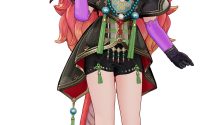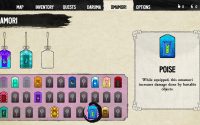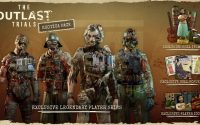Organizer: A Role-Puzzling Adventure launches July 25, devs information director style
The world of Organizer: A Role-Puzzling Adventure takes place on a sprawling, connected play network, on which characters, objects, puzzles, and inquiry all follow the same logic: when person character Jemma moves, the world moves to. And when you step off the top of the network in any way, you “loop” around to the other part. When it came to creating our boss conflicts, we had our work cut out for us because of these mechanics and because this sport had no failstates!
To preserve our context in check, we first laid down some fundamental ground rules about the sport world, and then we created a difficult template around it. Each area has two approximately delineated prison areas, which at some point introduce the components needed to solve a larger riddle at the town’s conclusion, which we framework as our boss fights. Though they may ( and should! ) Our bosses should n’t make you feel obnoxious; they are ultimately just larger puzzles with more on the line in the context of the story.
Our performer David Hellman produced some earlier sketches of the second director. Featuring eyes, demons, waters, and a tiny identity crisis.
In a more traditional match, you might have to be concerned about dying before the battle could also start again if you were hit. That’s not the situation in Arranger, but your development will still be limited until you can find a way to resolve the problem.
The risks– or rather, the difficulties – Jemma encounters are often connected to an odd power we refer to as” the static,” which we represent in the video game with a glowing crimson aura around things. The static objects are n’t affected by Jemma’s powers, and stay in place when she moves. This is true of all Arranger puzzles, but it’s most clearly expressed in these director battles: Jemma must find creative ways to defeat them using all kinds of tactics that were previously used in earlier riddles throughout the game.
By the time you reach that long-standing boy, you’ll have all the skills you need to beat him in the last phase of the first boss, though it may seem challenging at first glance!
A significant challenge was finding new ways to indicate these creatures. As you progressed through the narrative, we really wanted to convey how the managers ‘ scales were growing in size and bringing the story close to the root of the issue.
Many of these elements are not represented by the puzzle’s issues, but rather by the story context and art, given the nature of the style and our main goal of keeping the game experience light.
The second boss is introduced in one of our comic-style sequences!
Jemma can figure out the first boss, which is a worm that grows bigger and bigger, with more stable debris appearing each phase, shrinking the functional grid every time. The second and third bosses are actually the opposite: the grid expands, giving more room for movement, but the steps to harm the boss become more difficult, so you must use everything you’ve learned ( and Jemma may even need some assistance from other characters! ). So, it always strikes a balance between allowing players to maneuver around in the appropriate amount of space, based on the level of complexity and requirement we want to create.
If you want to push all those sight at once, you’d better use those parrots.
Watching how these components evolve throughout the game has been really exciting for us and we hope for gamers as well. It may feel like a natural evolution, but it took a lot of ( exhaustive ) iteration and ( fun! ) inquiry to give it the feeling we desired. We had to go through a lot of chaos and a lot of clutter, merely like Jemma, before the dust settled on the other finish to show the show’s true nature.
Thanks so much for checking over Arranger. We hope it touches your heartstrings!



